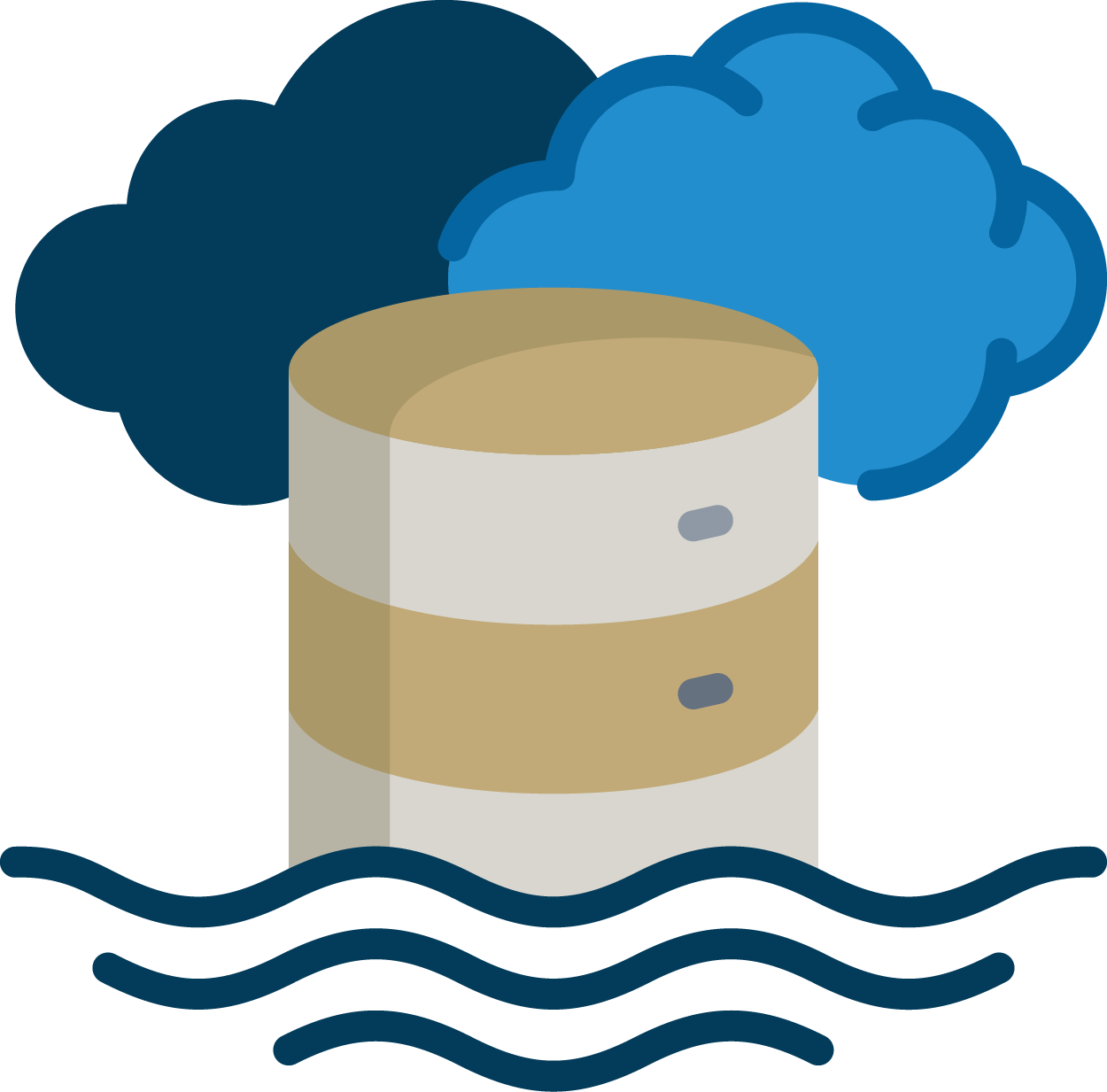Data Lake
GW Data Lake: Connect, Analyze, Innovate
The GW Data Lake is a centralized, secure data repository designed to store and manage a wide variety of data types from across the institution. By bringing together both structured data (like databases and spreadsheets) and unstructured data (such as text documents, images, and log files), the Data Lake becomes a powerful resource to support GW’s academic, administrative, and research initiatives. This consolidated approach addresses the growing demand for accessible, high-quality data and opens new opportunities for innovation and informed decision-making.

Goals
The Data Lake serves as a cornerstone of GW’s data strategy, with the following key objectives:
- Enable a Data-Driven Culture: Facilitate data accessibility and literacy across the institution, empowering stakeholders to make informed, timely decisions based on reliable data.
- Drive Innovation and Advanced Analytics: Provide a robust foundation for advanced data analysis, predictive modeling, and machine learning, enabling the development of cutting-edge insights and solutions.
- Ensure Data Integrity and Security: Maintain high standards of data quality, compliance, and privacy, with strong governance practices and secure access controls.
- Support Scalability and Future Growth: Leverage modern cloud technologies to ensure the Data Lake can grow with GW’s evolving needs, accommodating increasing data volume, variety, and complexity.
Data Lake Architecture
The GW data lake features a multi-layered architecture that supports extensive data storage, robust transformation, and processing capabilities. This system efficiently manages diverse data types, enabling powerful analytics and insights.

Data Sources
The Data Lake gathers data from diverse Structured (e.g., student information, CRM, enterprise administrative) and Unstructured (e.g., text, log, survey, sensor) sources. Data from these varied origins is then channeled into the data lake's processing and storage infrastructure for transformation and analysis.
Data Storage & Processing
GW’s data lake architecture is strategically designed to centralize and leverage a variety of data assets, moving beyond simple storage to enable sophisticated analytics and drive innovation.
Scalable and Efficient Data Storage & Processing
Data Lake Core
The data lake offers scalable and cost-effective storage, with data typically stored in an optimized format for performance and efficiency. A secure and reliable data migration service ensures smooth transfer from various sources.
Analytical Power
The GW data lake supports fast, user-friendly analytics across both structured and semi-structured data, making insights easy to access at scale.
The data lake organizes data into different layers or tiers, each serving a specific purpose:
- Raw Data: An unchangeable archive of original data
- Refined Data: Cleaned and structured datasets
- Data Warehouse: Curated data for reporting and business intelligence
This tiered structure helps manage data efficiently, ensuring it is properly processed and ready for transformation and analysis.
Data Transformation Capabilities
To ensure data is truly insightful and actionable, the data lake employs a range of transformation processes to ensure that the raw information from various sources is cleaned, organized, and made ready for meaningful exploration and discovery:
- Frequent Data Transfer: Data is regularly moved to a central storage location, ensuring timely access to updated information.
- Complex Data Integration: A comprehensive system manages the integration and transformation of diverse data from various sources, preparing it for analysis.
These transformation capabilities ensure that the raw information from various sources is cleaned, organized, and made ready for meaningful exploration and discovery
Data Usage
The processed data within the lake supports a wide range of Data Usage scenarios. Data integration combines data from various systems into a unified view, providing a comprehensive understanding of university operations for better insights and planning.
The processed data within the lake supports a wide range of usage scenarios. These examples illustrate its potential, and we actively encourage collaboration and support for further innovative applications.
- Data Integration: Combines data from various systems into a unified view, providing a comprehensive understanding of university operations for better insights and planning.
- Business Insights: Delivered through powerful visualization tools like Tableau and PowerBI, empowering power users across different departments to explore data, generate reports, and make data-driven decisions.
- API Access: Data sets are made available through APIs (Application Programming Interfaces), allowing for access and integration with other applications and services.
- AI & Machine Learning: The data lake serves as a training ground for AI and machine learning initiatives, enabling predictive modeling, pattern recognition, and the development of intelligent applications.
Data Governance
Data Governance ensures the quality, accuracy, security, and compliance of data throughout its lifecycle. We leverage Collibra to manage data governance resources, including policies, procedures, quality rules, and data stewardship.
The data lake provides a foundation of high-quality data. This infrastructure empowers departments with the resources for informed analysis, supports advanced research endeavors, and facilitates data-driven innovation across GW.
Request New Sources for the Data Lake
To request to add a new data source to the data lake, please go to the Data Governance Center and select the Add New Data Source to the Data Lake.

